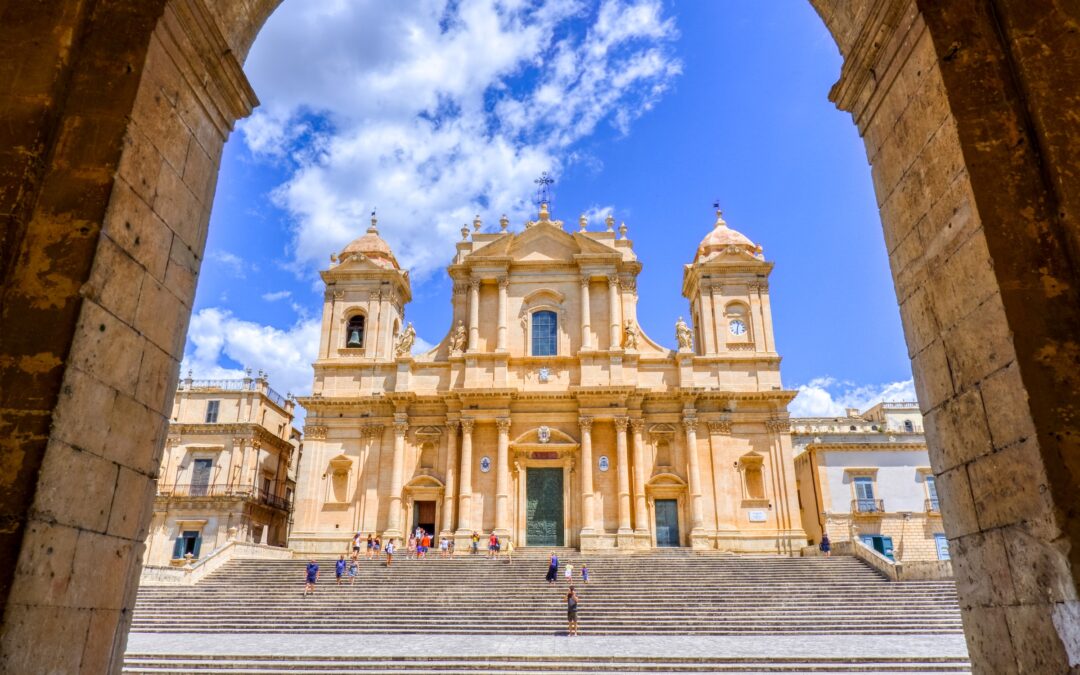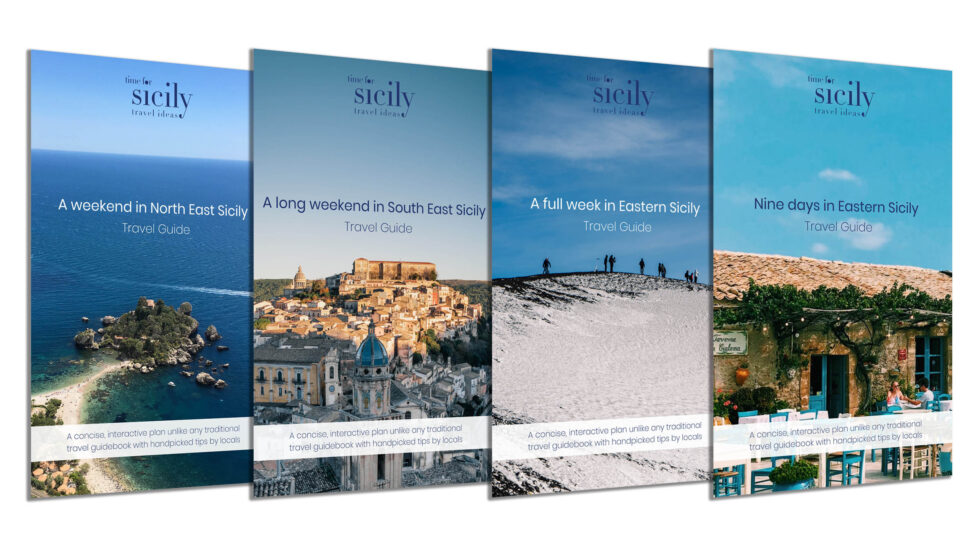We have the privilege to be published in the Issue 22 of the Mediterranean Lifestyle Magazine – TML – with an article on the beautiful Baroque towns of Val di Noto, in South East Sicily. Discover more about the Mediterranean Sea and its culture with our partner www.themediterraneanlifestyle.com
From a natural disaster to the splendor of the baroque rebirth
We need to go back to January 11, 1693. On this day everything started. A massive earthquake considered to be the strongest ever recorded of all Italian history, stroke the Val di Noto, that part of Sicily marking the South East corner of the island. More than 60’000 casualties, 45 villages were completed destroyed and the population was decimated at rates of 30 or 40%, depending on the town. A couple of minutes later a Tsunami followed, making the wounds and tears of the earthquake even worse. All coastal settlements and the most important cities on the Ionian Sea, including Catania and Siracusa, were flooded and seemingly destroyed forever.
At times of a strong religious grip over society, such catastrophe could have seemed as the Apocalypse. However, what followed was the unthinkable. The rebirth of entire communities, of art and society like never before. With the contribution of local artists, the Spanish government ruling over Sicily and the influence of the Italian baroque developments, namely in Rome, the beginning of the 18th century shaped the beautiful late-baroque South East Sicily we are able to visit today.
Here we would like to provide a selection of the Val di Noto UNESCO World Heritage baroque cities worth visiting should you choose Sicily as your next Mediterranean destination.
CATANIA
Nowadays the second largest city in Sicily, Catania features some distinctive traits. Above all, its baroque identity as a result of the 1693 earthquake. Yet, this city managed to make its own, peculiar version of baroque drawing the resources ironically from that land which brought about so much destruction. Indeed, Catania had chosen to give a special color palette to its baroque, thus creating the signature Baroque of Catania. Black and white was the chosen color palette. A blend of local materials such as the white limestone of Southern Sicily and the black lava rock sourced from the next-door Volcano Etna. A prime example of this signature Baroque is visible in Piazza del Duomo, where buildings harmoniously alternate black and white in a consistent pattern. Not be missed are also the Benedictine Monastery of San Nicolò, Via Crociferi and Palazzo Biscari.
SIRACUSA
Once the second largest city of the Ancient Greek world after Athens, Syracuse suffered the same destiny of the other Sicilian cities following the earthquake of 1693. Here though the foundations for its rebirth rooted back onto a glorious past, the one of the Greek Classic Age. Every time we visit Siracusa, we get goose bumps when we observe the wall of the baroque Cathedral. Why is that? Because the columns sustaining the whole structure are the ones of the Greek Temple of Athena. Over centuries, this place managed to be a sacred place for Greeks, Arabs and Christians. A mix that only Sicily can offer in the Mediterranean scene.
NOTO
Maybe this is the most noteworthy example of the late-baroque Sicilian rebirth. The most noble, authentic expression of it. One key example is Palazzo Nicolaci and its iconic balconies, sustained by very baroque angels and winged horses. Or the Cathedral, standing on an elevated terrace and dominating with its baroque façade a large square from the top of a lovely limestone staircase. Palazzo Ducezio and many more examples make Noto unique, at times exaggerated in a baroque fashion, at times charming and very instagrammable. No surprise that because of that Noto has become a popular destination for weddings in Sicily. It is chosen by Italians and foreigners also thanks to the lovely countryside rich of olive, almond trees and plenty of stylish boutique hotels. The crystal-clear waters beach 20-min away from Noto, completes the list all the criteria for a perfect holiday.
RAGUSA & MODICA
Moving further South and inland, we get lost in the small streets of Ragusa Ibla, the baroque historical city center of Ragusa. All of a sudden, as unexpected as the earthquake of 1693, the view opens up on the San Giorgio Cathedral, another masterpiece of Sicilian late-baroque age. A similar setting can be seen in the sister town of Modica too, with baroque narrow streets and impressing churches for size and decorations. However, what distinguishes Modica it’s its proud, long and well preserved tradition around chocolate making.
The Cioccolato di Modica, it’s unique in its genre. Despite industrialization has brought new and refined methods of making chocolate, what is special here in Modica is that chocolate making has not changed since the age of the Spanish conquistadores. Indeed, when Spain was in the midst of the New World discovery, Sicily was part of the Spanish Kingdom and hence a lot of exchange of goods, knowledge and people happened between the island, mainland Spain and the Americas. The known chocolate-making process back then was the one employed by the Aztecs for the cocoa beans processing, and as such it survived in Sicily through the centuries. An addition to it was however made, sugar.
Nowadays the Modica Chocolate is characterized by a grainy texture and very strong aroma. One of the best is the one of the Antica Dolceria Bonajuto, which keeps high the flag of this ancient chocolate-making process.
SCICLI
Last but not least, the town of Scicli might be a little bit underrated among the major tourists’ routes. However, it was made popular by the TV series Il Commissario Montalbano, at least across Italians and those abroad with a special passion for Sicily and crime shows. Before travelling to Sicily, you might want to start experiencing the baroque of the South East by watching an episode of this typical Sicilian movie shot in Scicli. Alternatively, you might want to grab a book and read the original author, Andrea Camilleri. He is recognized to be a truly authentic Sicilian storyteller, hence providing you with a great introduction to the island.
Should you have liked this article, another way of discovering South East Sicily is to consult our ebook travel guide . There we gathered all the travel ideas not to be missed for five days in the baroque towns of Sicily with plenty of itineraries, restaurants, experiences, hotels and more.
.
.
.
Photos: Unsplash

